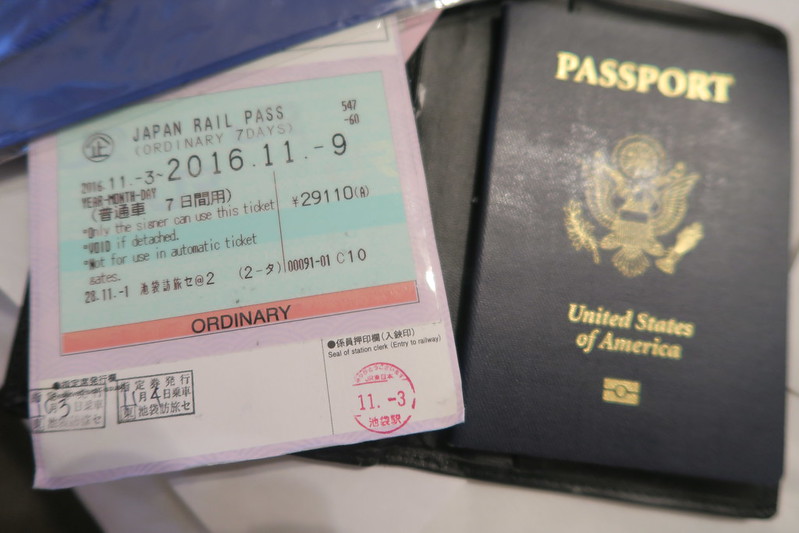
So, you are traveling to Japan and want to figure out how to travel Japan on a budget and are interested in the Japan Rail Pass. Should you get a 7-Day, 14-Day or 21-Day JR Pass? Should you get one at all?
If you are planning to stay in one region without traveling to long distances, then the answer is no.
If you are planning to stay two weeks I would always factor in about $200 US or Y20,000 for train and metro and most of that money will go into charging your IC Card: Suica, Passmo or Nanaco card.
As most of the short regional traveling will cost you several bucks a day, the Y20,000 is more than enough to cover your trip.

But it’s when you travel long distances and you need to ride on the shinkansen (bullet train), that is when you need to plan for a Japan Rail Pass.
A cool fact about a JR Pass, for those living outside of Japan, is that the Japan Rail Pass allows one to ride a JR train, JR bus and the Hikari or Sakura Shinkansen.
Currently, a Japan Rail Pass averages about $267.00 for 7-Days, $425 for 14-days and $544 for 21-days (first class, green car cost more and similar to business class on a plain, gives you more leg room) and then for the shipping of your card to your address, add about $30.00 extra for the final total.

Where the Japan Rail Pass is cost effective is the Shinkansen. For example, if I was to go from Tokyo to Kyoto and back via shinkansen, that right there is over $200 in shinkansen ticket costs. If you got a JR Pass, your pass covers that expense.
For my recent trip, I purchased a 7-Day JR Pass and traveled from Tokyo to Kyoto and back, Tokyo to Nagoya and back and also went to Gifu. Factor in the shinkansen back and forth trips and that right there is over $400+ on shinkansen tickets, but since I did it within the 7-day period, I paid much less. And while I had my JRPass, I didn’t have to use my Suica Card, just made sure whenever I took a JR train, walked to the attendant area and showed them my JRPass and was allowed to walk through the gate.
So, there are positives of having a JR Pass. Just the long distance traveling and shinkansen trips alone made it worth purchasing.
But you have to make sure you know how many days you are doing long distance traveling and choose when to activate your JR Pass very carefully.
To get a JR Pass, you must purchase it 90 days before your trip, so I left in October, ordered mine back in August.
Because the long distance traveling would take place on November 3rd through the 9th, I went into my JR East Information booth (please note, only certain booths can activated JR Passes) two days before and had them activate my pass for the 3rd. I also had my shinkansen tickets checked to see if reserved seating is available and they quickly purchased and reserved my tickets in advance.
This is very important that you get your tickets in advance, because they do fill up. And they will ask you if you want reserved or non-reserved tickets. The last thing you want is being on a packed shinkansen and not having a seat. So, make sure you get your reserved tickets in advance.
I will go more into how to ride a shinkansen in another post but for now, if you are traveling to Japan and intend to travel long distances, I highly recommend a Japan Rail Pass.
